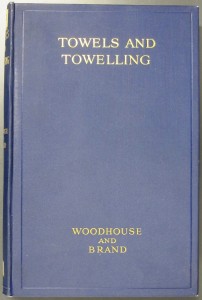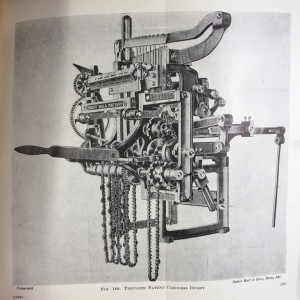
Towel-Related Literature in the Holdings of Cambridge University Library
A towel … is about the most massively useful thing an interstellar hitchhiker can have. Partly it has great practical value. You can wrap it around you for warmth as you bound across the cold moons of Jaglan Beta; you can lie on it on the brilliant marble-sanded beaches of Santraginus V, inhaling the heady sea vapours; you can sleep under it beneath the stars which shine so redly on the desert world of Kakrafoon; use it to sail a miniraft down the slow heavy River Moth; wet it for use in hand-to-hand-combat; wrap it round your head to ward off noxious fumes or avoid the gaze of the Ravenous Bugblatter Beast of Traal (such a mind-bogglingly stupid animal, it assumes that if you can’t see it, it can’t see you — daft as a brush, but very very ravenous); you can wave your towel in emergencies as a distress signal, and of course dry yourself off with it if it still seems to be clean enough.
Douglas Adams, The Hitch Hiker’s Guide to the Galaxy (London: Pan Books, 1979)

Front cover of The Design and Manufacture of Towels and Towelling, by Thomas Woodhouse and Alexander Brand
May 25th is Towel Day, an annual celebration of the life and work of Douglas Adams. Adams (1952—2001) was born in Cambridge and read English at St John’s College, graduating with a 2:2 in 1974. He is most famous for his Hitch Hiker’s Guide to the Galaxy series, originally broadcast on radio in 1978, then variously appearing as a trilogy (in five parts) of novels, a television series, a computer game, a feature-length film, and in various stage adaptations.
This year, the University Library is celebrating Towel Day for the first time with a small exhibition in the South Reading Room, so it seems appropriate to investigate the Library’s towel-related holdings.
The bibliography of towels is, in fact, remarkably limited. The UL holds only one book on the subject, The Design and Manufacture of Towels and Towelling (London: Isaac Pitman & Sons, 1929), by Thomas Woodhouse and Alexander Brand (9420.c.962). Fortunately, this is a comprehensive work, with chapters on such matters as “Stripe Effects on Twill and Fancy Weave Grounds”, “Turkish Towelling or Terry Fabrics”, “The Huckaback Motif in Twills and Diamonds” and extensive illustrations of what look to modern eyes like rather scratchy towels, and of the machinery used to make them. Woodhouse (1862-1933) and Brand (dates unknown), both on the staff of the Dundee Technical College and School of Art, produced several similar works both as a team and individually, including A Century’s Progress in Jute Manufacture (Dundee: David Winter and Son, 1934) and Jute Bags, Pockets and Sacks (London: Macmillan, 1935), all of which are available in the University Library.
Few writers have ventured to follow in the footsteps of these pioneers. The legal deposit mechanism has failed to bring us Alison Jenkins’ Jurassic Towel Origami: The Craft that Bath Time Forgot! (Lewes: Ivy Press, 2009), a reprint of a work from the United States consisting of instructions of how to fold towels into models of various breeds of dinosaur. This may seem a little frivolous for the University Library’s readers, but Adams would surely feel vindicated in his high opinion of towels by a recent publication from Rick Houlihan, The Role of Towels as a Control to Reduce Slip Potential (Buxton: The Health and Safety Laboratory, 2007), available as a pdf from the publishers. This is an extensive and highly technical investigation of the use of towels in the prevention of bathtime accidents, and although it closes in time-honoured fashion by calling for further research, I feel it is likely to remain the standard work on the subject for a long time to come.


Pingback: towel-related literature | Library Shenanigans